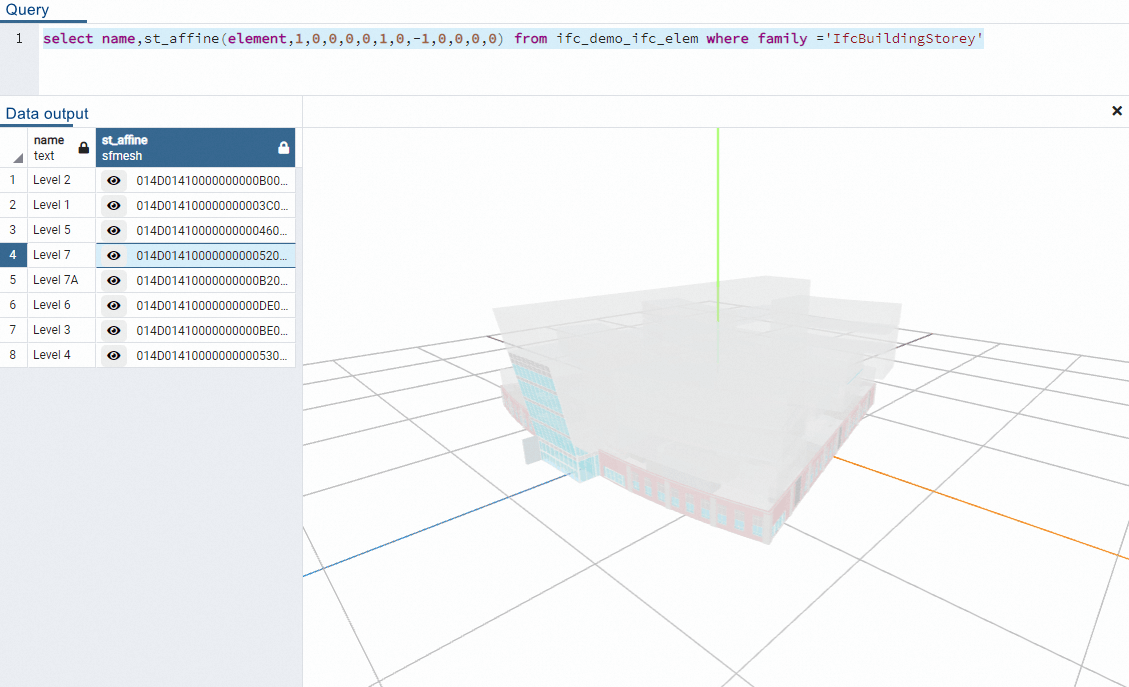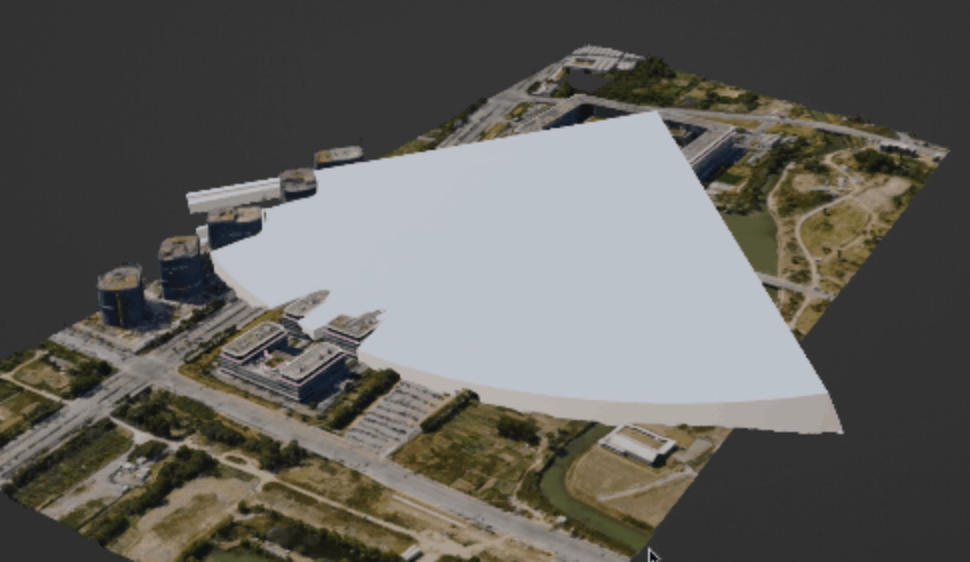This topic describes the details and usage of GanosBase Utility.
Introduction
Overview
GanosBase Utility is a spatial-temporal extension for PolarDB for PostgreSQL (Compatible with Oracle) that can be used to import, export, and validate 3D files in popular formats, such as OBJ, GLB, IFC, and OSGB. You can use the functions provided by GanosBase Utility to import 3D models into the database for processing.
GanosBase Utility seamlessly integrates with other GanosBase extensions. After importing 3D models to the database using GanosBase Utility, you can perform further operations like modeling, rendering, and simulation, streamlining the workflow and enhancing development efficiency. The following figures demonstrate the effectiveness of using GanosBase Utility with other GanosBase extensions.
Import and view IFC files:

Import and view OSGB files:

Perform Field of View (FOV) analysis on OSGB data:

Scenarios
Import and export 3D files
GanosBase Utility can be used to import, export, and verify 3D files in popular formats, including OBJ, GLB, IFC, and OSGB. This offers you flexibility in processing 3D data.
View and manage 3D data
GanosBase Utility makes it easy to manage and view 3D models by providing tools for rapid data import and export. This significantly streamlines the workflow and enhances efficiency.
Validate 3D data
GanosBase Utility can be used to check the formats, strcutures, and integrity of 3D files, ensuring their validity and integrity.
Components
GanosBase Utility provides functions to import, export, and validate data for use in other GanosBase extensions, such as GanosBase Sfmesh and GanosBase Scene.
Data import
IFC
The Industry Foundation Classes (IFC) is an open, industry-standard format that is used to describe and exchange architectural and infrastructure information. It is developed by the International Standard Organization (ISO) to facilitate collaboration and interoperability in Building Information Modeling (BIM) projects.
The IFC format is an object-oriented file format used for representing components, properties, and relationships in construction projects. It stores information that describes shapes, materials, properties, and spatial relationships, as well as information about the functions, construction process, and maintenance procedures of a facility.
OBJ
The OBJ file format (also called Wavefront OBJ) is a widely used file format that stores information about the shapes and materials of static 3D models.
Each OBJ file is accompanied by an MTL file. The OBJ file holds information about a model's vertices, normals, texture coordinates, and faces. It describes this information using keywords, such as v (vertices), vn (normals), and vt (texture coordinates), and defines each face using vertex indexes, which can describe how vertices are connected to form polygons. The companion MTL file contains information about a 3D model's material properties, such as color, texture, and lighting.
GLB
gITF Binary (GLB) is a binary file format for 3D models. It contains information about a model's shapes, materials, textures, and animations.
Because GLB stores the data in a binary format, file sizes are smaller and loading times are shorter, making GLB an ideal format for transmitting and rendering 3D models in real-time applications, such as virtual reality (VR), augmented reality (AR), and WebGL.
OSGB
The OpenSceneGraph Binary (OSGB) format is used for storing 3D scenes. It is part of the OpenSceneGraph (OSG) framework and holds information about 3D models, including their textures, and material properties.
Because OSGB stores data in a binary format, it achieves smaller file sizes and faster loading compared to formats such OBJ and FBX. These advantages make OSGB the ideal format for dealing with massive scenes.
Data export
3D Tiles
3D Tiles is an open, standard-based format designed for efficiently streaming massive amounts of 3D geospatial data such as city models, terrains, and point clouds on web applications.
The hierarchical structure of 3D Tiles makes it ideal for use cases that demand rapid rendering and visualization of massive amounts of geospatial data. Tiles are organized based on geospatial position and level of detail (LOD). As users zoom in, the system seamlessly transitions from lower LOD tiles to higher LOD tiles, providing more details. This dynamic approach minimizes loading times, allowing users to efficiently view and interact with immense datasets.
Data validation
OSGB
OSGB files store data in a binary format, which is difficult to validate. GanosBase Utility offers functions to validate the effectiveness and integrity of OSGB file data.
Other components
For more information, see Utility SQL references.
Quick start
Overview
This section describes the usage of GanosBase Utility, such as how to install the extension, and import, export, and validate data.
Basic usage
Advanced usage
GanosBase Utility provides advanced parameters, enabling you to customize configurations.
SQL reference
For more information, see Utility SQL references.
 Elastic Compute Service (ECS)
Elastic Compute Service (ECS)
 Lingma
Lingma





























